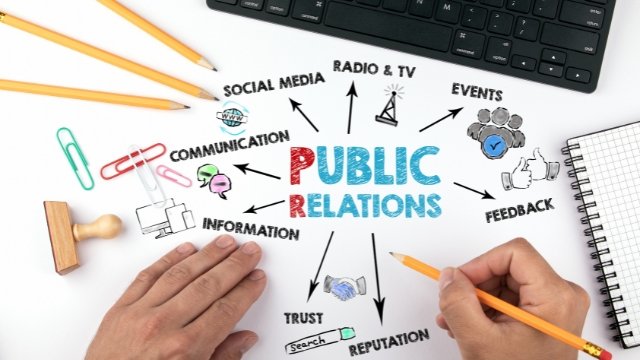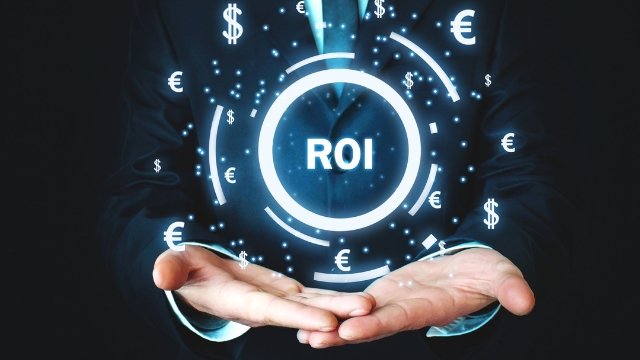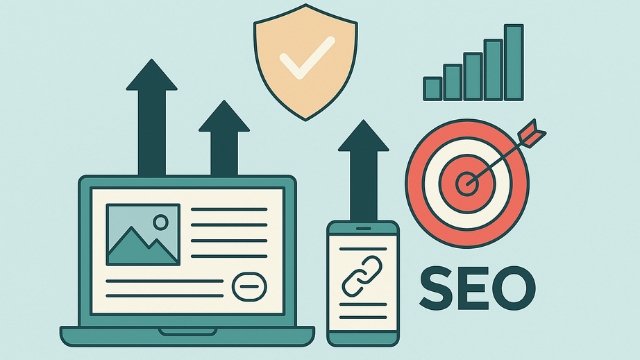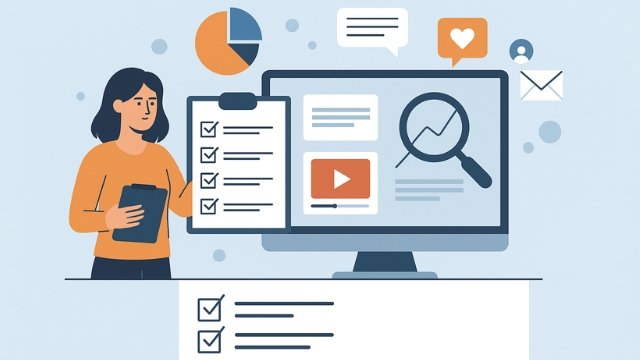Digital Public Relations (Digital PR) has become one of the most powerful ways for brands to shape perception, build authority, and connect with audiences in the digital-first era, unlike traditional PR, which relies heavily on print media, events, and offline coverage, digital PR leverages online platforms, high-authority publications, influencer partnerships, and SEO-driven campaigns to generate measurable impact.
In countries like India, some businesses are already experiencing success with digital PR, earning backlinks, brand mentions, and a stronger online presence. Yet many still mix it up with digital marketing or hold on to old PR practices. Knowing how digital PR truly works, and how it stands apart from traditional PR, is the first step to building a strategy that drives visibility, credibility, and long-term growth.
What is Public Relations?

Public Relations (PR) is all about managing how a brand is seen and trusted by its audience. At its core, PR is a communication process that helps businesses and organizations build relationships with the people who matter most: customers, investors, employees, and the wider community.
Digital PR takes this idea online. It uses websites, blogs, social media, and digital publications to grow visibility, authority, and credibility. By earning high-quality backlinks, publishing engaging content, and gaining coverage on trusted platforms, brands can strengthen both their reputation and their search presence.
Despite the shift to digital, the purpose of PR remains the same: creating mutual value between a company and its audience. Traditional PR has always been about telling the right story, at the right time, to the right people, and digital PR continues this mission with modern tools and measurable outcomes.
Key Elements of Traditional PR
-
Strategic Communication – Crafting messages that influence how people view a brand.
-
Relationship Building – Nurturing trust with customers, stakeholders, and media partners.
-
Media Relations – Collaborating with journalists and press outlets for positive coverage.
-
Crisis Management – Protecting a brand during challenges that may harm its reputation.
-
Community Engagement – Building goodwill through events, CSR initiatives, and partnerships.
How Does Digital PR Differ From Traditional PR?

Traditional PR and Digital PR may share the same ultimate goal, building awareness and shaping brand reputation, but the way they approach it is very different. Traditional PR leans on offline channels such as newspapers, magazines, television, and radio. Its primary focus is to influence how people perceive a brand and to strengthen awareness through media coverage, events, and community engagement.
Digital PR, on the other hand, takes this practice into the online world. It uses blogs, websites, social platforms, and digital publications to increase visibility, credibility, and search engine rankings. While traditional PR concentrates on shaping public perception, digital PR emphasizes building backlinks and online authority, which in turn boosts discoverability and audience reach.
Despite these differences, the two approaches often overlap. A strong digital PR campaign not only improves search visibility but also enhances reputation, while traditional PR efforts can generate valuable online mentions. Together, they create a more comprehensive strategy that allows a brand to gain both stronger credibility and stronger digital presence.
Channels, Audience, and Longevity
Traditional PR relies on established media like newspapers, magazines, television, and radio to spread its message. While effective, this approach limits a brand’s reach to specific audiences and a fixed window of time. Digital PR expands those possibilities by operating across online publications, blogs, social media platforms, and other digital outlets, giving brands the ability to connect with a far broader and more diverse audience.
Another major difference lies in how long the impact lasts. Traditional PR placements, whether a news article or a TV segment, often fade quickly once the coverage is over. In contrast, digital PR content remains accessible online for months or even years. A well-executed campaign can continue driving traffic, backlinks, and visibility long after it’s first published, making digital PR not only more measurable but also more enduring in its impact.
Measurement and Return on Investment (ROI)

One of the biggest differences between traditional PR and digital PR lies in how success is measured. Traditional PR often looks at broad indicators such as brand influence, media exposure, share of voice, or how well crisis communications are handled. These metrics give a sense of reputation and reach, but they are not always easy to quantify in terms of direct impact.
Digital PR, on the other hand, allows for much more accurate and data-driven evaluation. A successful campaign can be tracked against measurable goals such as referral traffic, backlinks, and search visibility. Referral traffic shows whether coverage on high-traffic websites is actually sending visitors to your site. Backlinks provide long-term SEO value, but unlike older practices that focused on volume, digital PR emphasizes quality, earning links from authoritative publications your audience actually trusts. Finally, SERP visibility (Search Engine Results Page visibility) gives a clear picture of how prominently your brand appears across keyword searches, reflecting both visibility and potential traffic.
By combining these measurable outcomes, digital PR provides a more transparent view of return on investment, helping businesses see not just if their message is being heard, but also how it translates into real digital growth.
Digital PR and SEO Integration
The connection between digital PR and SEO is simpler than many people think. While traditional PR focuses mainly on brand awareness and perception, digital PR goes a step further by directly strengthening a website’s search performance. By earning high-quality backlinks and increasing online visibility, digital PR plays a key role in boosting search engine rankings.
In fact, digital PR should be seen as an extension of your SEO strategy. When PR and SEO teams collaborate, both disciplines benefit, PR campaigns gain measurable impact, and SEO efforts get the authority signals they need to perform better in search. The guiding question for any campaign should be: “Can we get SEO value from this digital PR initiative?” That mindset ensures every story, partnership, or media placement contributes not just to reputation, but also to long-term search visibility and digital growth.
How Does Digital PR Contribute to SEO?

-
High-Quality Backlinks – A core goal of digital PR is to publish engaging stories and content on reputable online publications. These placements often earn backlinks from authoritative domains, signaling to search engines that your site is credible and worth ranking.
-
Stronger Domain Authority – Regularly earning links from trusted websites boosts your domain authority, which is one of the most important factors in search rankings. A higher domain authority directly improves your chances of appearing on the first page of search results.
-
Relevant Referral Traffic – Beyond SEO value, links from industry-specific or niche publications send qualified visitors to your site. This targeted referral traffic increases the likelihood of leads, conversions, and long-term customers.
-
Positive Brand Mentions – Consistent coverage and mentions across well-regarded digital platforms build brand authority in the eyes of search engines. These brand signals enhance trust, which further supports higher search visibility.
What Are the Key Benefits of a Strong Digital PR Strategy?
A strong digital PR strategy delivers measurable, long-term value for businesses. Unlike traditional campaigns that fade quickly, digital PR continues to build authority, visibility, and audience trust over time. Its key benefits include:
-
Improved SEO Performance – High-quality backlinks from authoritative websites strengthen domain authority and push your brand higher in search rankings.
-
Sustained Online Visibility – Coverage on leading digital platforms keeps your brand discoverable long after the campaign ends, ensuring lasting visibility.
-
Enhanced Brand Credibility – Mentions and features in trusted publications build confidence with both search engines and potential customers.
-
Measurable ROI – Every campaign can be tracked for traffic, leads, and conversions, giving businesses clear insight into what’s working and where to optimize.
-
Deeper Audience Engagement – Online platforms encourage two-way interaction. Through shares, comments, and feedback, brands can better understand their audience and strengthen long-term relationships.
What Are the Best Practices for Building an Effective Digital PR Campaign?

Building a strong digital PR campaign goes beyond sending out press releases; it’s about creating valuable stories and making sure they reach the right audience. The following best practices can help maximize impact:
-
Create Compelling, Data-Driven Content – Journalists, bloggers, and online publishers look for content that stands out. Unique research, original insights, or data-backed stories, presented as articles, infographics, or case studies, are more likely to earn coverage and shares.
-
Target the Right Publications – Focus on outlets that align with your industry, audience, and brand objectives. Relevance increases the likelihood of meaningful engagement, high-quality backlinks, and better brand positioning.
-
Optimise for SEO – Use natural, semantic keywords in your content and headlines to boost search visibility. When content is both newsworthy and SEO-friendly, it has a longer lifespan online.
-
Leverage Multiple Formats – Don’t limit campaigns to just text. Incorporating videos, infographics, podcasts, or interactive tools makes your content more engaging and shareable.
-
Build Strong Relationships – Invest in connections with journalists, bloggers, and influencers. A consistent, trustworthy relationship leads to repeat coverage and long-term media support.
-
Monitor and Measure Performance – Track backlinks, referral traffic, and conversions using analytics tools. Pay attention to audience feedback, comments, and shares to refine future campaigns and strengthen brand perception.
Examples of Digital PR Strategies
A successful digital PR campaign often combines different creative approaches to gain coverage, backlinks, and attention. Here are a few proven strategies that consistently deliver results:
1. Trading Up the Chain – This method involves starting small by placing a story in niche blogs or lower-tier publications, then using that initial buzz to get noticed by bigger, more authoritative outlets. Over time, the story builds momentum and reaches top-tier media.
2. Newsjacking – By inserting your brand into trending news or conversations, you can ride the wave of public interest. When done thoughtfully, newsjacking allows your brand to gain visibility in stories people are already engaging with.
3. Original Research – Publishing unique studies, surveys, or data-backed reports gives journalists and content creators something fresh to cite. Because it offers new insights or challenges existing assumptions, original research often secures premium coverage and authoritative backlinks.
Digital PR in India: Watch This Space

Digital PR is steadily gaining momentum in India, though its adoption has been uneven across industries. Many businesses still lean heavily on traditional PR methods like print coverage and television appearances, while others are only beginning to experiment with online strategies. The shift is gradual, influenced by diverse audience preferences, varying digital maturity levels, and limited in-house expertise in digital PR.
At the same time, India’s rapidly growing internet penetration, social media usage, and digital media consumption are accelerating change. Brands that embrace digital PR now have the opportunity to amplify their visibility, secure stronger online authority, and stay ahead of competitors. As more companies recognize the long-term benefits of digital-first communication, digital PR in India is set to become an essential tool for both local and global growth.
Elevate Brand Success with Digital PR
Digital PR is more than just an add-on to traditional strategies; it’s a powerful approach that expands a brand’s reach, influence, and measurable impact. By combining SEO practices with compelling storytelling, securing placements in relevant online publications, and building authoritative backlinks, businesses can strengthen their digital footprint and stay visible where their audience spends the most time.
Beyond visibility, digital PR fosters trust and credibility, helping brands form lasting connections with their audience. Partnering with the right digital PR or marketing agency can accelerate these results, ensuring campaigns are not only creative but also data-driven and measurable. In today’s competitive landscape, embracing digital PR isn’t just an option; it’s a pathway to sustained brand growth and long-term success.
Frequently Asked Questions (FAQs) About Digital PR for SEO
Q1. How is digital PR different from traditional PR?
Answer: Traditional PR focuses on offline media such as print, TV, and radio, while digital PR leverages online platforms, SEO, and social media to boost visibility and credibility.
Q2. Why is digital PR important for SEO?
Answer: Digital PR earns high-quality backlinks and brand mentions from authoritative sites, which strengthen domain authority and improve search engine rankings.
Q3. What are some common digital PR strategies?
Answer: Popular strategies include publishing original research, newsjacking trending topics, and trading up the chain from smaller outlets to top-tier publications.
Q4. Can small businesses benefit from digital PR?
Answer: Yes. Digital PR helps even small businesses reach targeted audiences, improve search rankings, and build trust without the high costs of traditional advertising.
Q5. How do I measure the success of digital PR campaigns?
Answer: Trackable metrics include referral traffic, backlink quality, search visibility, and audience engagement—making digital PR highly measurable compared to traditional methods.
Author Profile

- Nitin Jain - C.E.O - India PR Distribution
- Nitin Jain is the founder and C.E.O of India PR Distribution - India's top Press Release Distribution and PR Agency. Nitin has more than 20 years of experience in PR, Corporate Communications, Digital Marketing, Branding Strategy and Lead generation.
Latest entries
 Search OptimizationSeptember 16, 2025What Is Digital PR and Why It Matters for SEO Success
Search OptimizationSeptember 16, 2025What Is Digital PR and Why It Matters for SEO Success Press releaseAugust 14, 2025Press Release Distribution: How to Share Your News Effectively
Press releaseAugust 14, 2025Press Release Distribution: How to Share Your News Effectively Search OptimizationJuly 29, 2025Digital PR for SEO – The Ultimate Guide to Boosting Your Rankings
Search OptimizationJuly 29, 2025Digital PR for SEO – The Ultimate Guide to Boosting Your Rankings Press Release TipsJuly 24, 2025How to Do PR for Startup: 2025 Readiness Checklist
Press Release TipsJuly 24, 2025How to Do PR for Startup: 2025 Readiness Checklist

